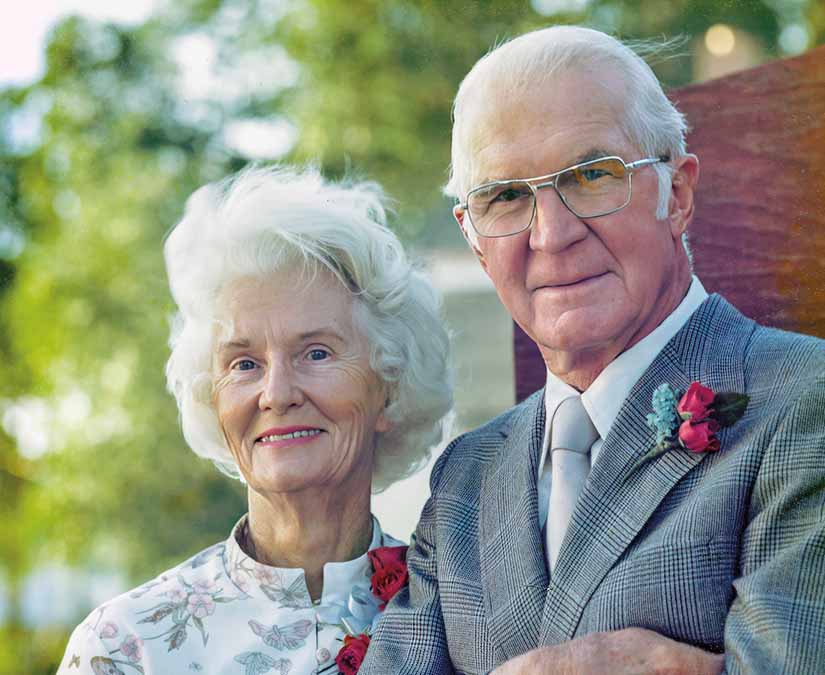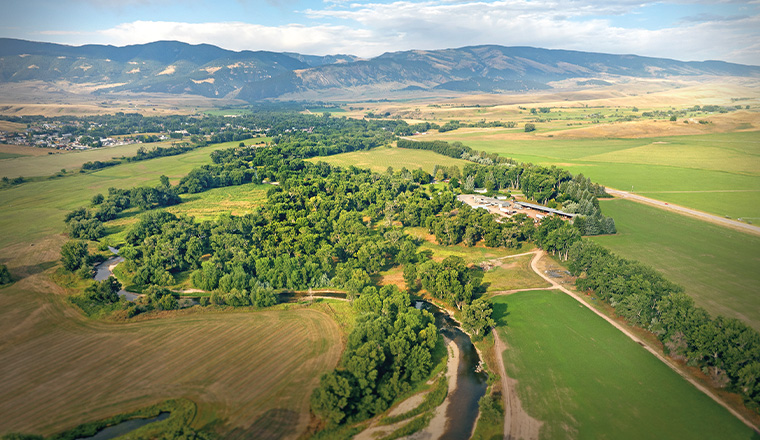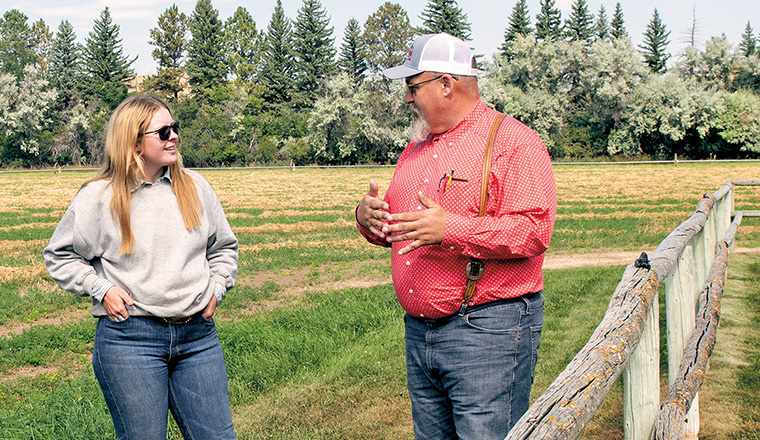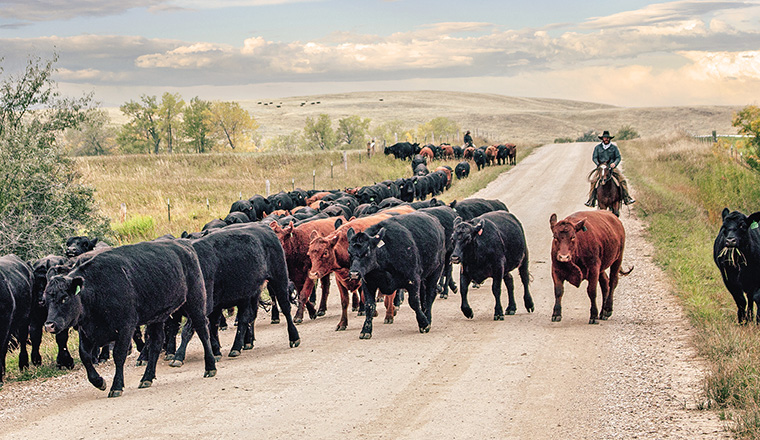Padlock Ranch: Where learning is the legacy
The Wyoming mountain range looms tall as a dusky silhouette, high above the rolling sea of sagebrush and grassland – majestic, inspiring and wild. From humble beginnings, Homer Scott and his wife Mildred ventured to Wyoming from Nebraska in the 1930s. They bought a ranch at the foot of the Big Horn Mountains and started with 300 cows and 3,000 acres. Today Padlock Ranch is a diverse cow-calf, farming and feedlot operation spanning 430,000 acres in southern Montana and northern Wyoming with 12,000 head of cattle.
True to Homer’s vision for excellence, the ranch has evolved and thrived over the years. Homer’s eldest son, Dan Scott, who passed away in 2013, is remembered for decades of leadership, serving as the ranch’s CEO. Dr. Trey Patterson took the reins as Padlock’s second non-family-member President and CEO in 2014. Trey grew up in Texas and Colorado with a love for cattle but didn’t have a clear path to owning or managing a ranch. So, he spent years learning everything he could about cows and the beef industry, managing two university research herds and earning his doctorate.

Homer and Mildred Scott
“Learning is a key component of our business,” says Trey. “We operate in such a diverse, changing environment today. We’re dealing with climate, biology, animal science, commodity markets and human beings. Our learning curve is continually on the incline. And for me, that’s the fun part.”
Trey works closely with Padlock’s board of directors, a devoted group of family and non-family members. As they plan for future generations, they’ve worked to clearly define the ranch's purpose for everyone involved, including employees. They call these five pillars of purpose: human excellence, stewardship of natural resources, profitability, positive community involvement, and serving as a legacy for the Scott family—or, in cowboy terms, the essence of their brand.
Human excellence
Engaging people who are good thinkers, hard workers and lifelong learners is fundamental to the Padlock way of doing business. JD Hill, for example, started as a cowboy and joined the ranch 14 years ago. Today he’s livestock manager, responsible for the feedlot and five, 2000-head cattle units, all with meticulous grazing plans on this vast, rugged landscape.
“When I was given opportunities, I just kept moving forward as my skills and abilities would let me,” says JD. “That’s the culture at Padlock Ranch. As a manager, my mindset has changed over time. When we’re interviewing people, sometimes it’s easy to focus on someone who comes in with a base skill set because that’s what we need today. But who can this person be five years from now? That’s why we look for attitude, people who are humble, teachable, coachable and willing to learn. We can teach skill.”
Stewards of the natural resources
Before sustainability was a popular term, the Scott family knew that caring for the land, soil, water and wildlife was vital to keeping the ranch viable for generations. As wise stewards, they use grazing plans in rotation to give plants time to rest and grow deep roots. Riparian areas are not overly grazed, allowing vegetation to naturally protect stream banks. Everyone at Padlock Ranch knows that conservation and profitable ranching go hand in hand.

Focused on profitability
“Profitability is a big focus for managing debt and risk,” Trey says. “If you have good information, you can use it as a backbone for making good decisions. So, we spend a lot of time collecting and analyzing prudent and useful information and working hard to understand it. We’re diligent students of the market. I’m looking at cattle prices today and asking myself, should I hedge? Well, I guess it depends on the profit objective. If we don’t know our total cost of production on any given day, it’s more difficult to make those decisions.”
Positive members of the community
Trey and his team are passionate about serving, educating and sharing with others in their local community. And more broadly in the beef industry. Staff members have served on town councils. They volunteer their time and talents on local and national boards. On any given day, you’re likely to see a group of university extension agents or kindergarteners on the ranch. Because a significant portion of Padlock’s land is on the Crow Indian Reservation, the Scott family and their employees have also developed a deeper understanding and appreciation for the Crow heritage and culture.
Shared learning is the heart of Padlock Ranch. Sarah Baker, a senior at Montana State University, is earning her ranching system degree in the Dan Scott Ranch Management Program – named in honor of Padlock’s late CEO. In the program, students gain real-world experience on a host ranch through a two-year summer internship. Sarah was fortunate to complete hers at Padlock.

College intern, Sarah Baker, talks to JD Hill about her GIS mapping project.
One aspect of the internship is to find a project that serves the ranch and the student in their learning experience. Sarah’s project involved cataloging all water resources in the Forks Unit, about 130,000 acres. She digitally pin-mapped more than 100 wells and reservoirs and assembled all the corresponding water data into a Geographic Information System (GIS) map program online. Trey and his team will use the information to train new employees, make capital water investments and fine-tune their grazing plans.
“I’ve grown immensely during this internship,” Sarah says. “This project helped me discover that I really enjoy taking lots of information and putting it together in a simple format that will make someone’s life easier down the road. This experience provided me with a wonderful networking opportunity, a fascinating skillset and memories I’ll cherish forever.”
A Scott family legacy
As Padlock Ranch has evolved from an owner/ operator to a sibling partnership and now to a multi-cousin consortium, Trey and the board focus on ways to educate and engage family members who haven’t grown up on the ranch. They’ve coined this new initiative the “Padlock Learning Academy.” They recently held a virtual lunchtime seminar with family members to talk about the beef industry, its different sectors, and where Padlock Ranch fits. They also invite family members to visit and experience the ranch or seek employment if they’re interested.
“We have some very eager learners in the family,” says Trey. “They are highly intelligent and well educated. They’re interested in learning more about what we do, what we stand for, our operations and accounting methods. We want them to feel the same pride and passion those of us who live and work here feel every day.”

Deeply rooted
In the old West, cowboys talked about riding for the brand. To them, a brand held significance far beyond identifying cattle. It was a source of pride or a family crest. They spoke well of the brand, stood up for the brand, and if need be, they fought for the brand. If a ranch wanted cowboys to ride for their brand they needed to give them a purpose. Or at Padlock Ranch, five pillars of purpose.
“The most fulfilling part for me is the human interactions,” says Trey. “When I see people growing, learning and getting better at their jobs that’s the most rewarding part. When people know why their work matters and are excited to come to work every day, it just puts pride in my heart.”
Return to Stories home page.